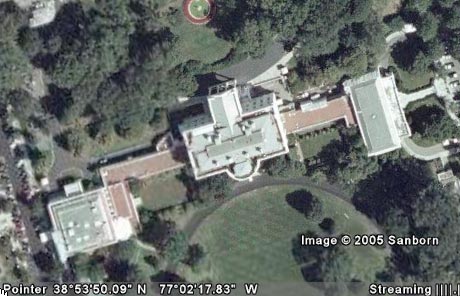This blog post is yet another good example of how a little knowledge coupled to knee-jerk nationalism really is a terrible thing.
All posts by Stefan Geens
NASA + Google: What’s in it for me?
I guess this is something of an obligatory post, so, for the record, here is what’s coming:
Google will also gain access to NASA’s space data and imagery. Google already uses satellite imagery in its Google Maps service and for its Google Earth software. Google could enhance the imagery with data about temperatures or crop patterns, said Peter Norvig, director of search quality at Google.
The company is also interested in extending its mapping prowess to outer space, he said.
“We already have Google Earth,” Norvig said. “We’d like to have Google Mars and Google Moon.”
“I didn’t realize how much content and information was trapped in the accumulated history of these organizations,” Schmidt said. “Imagine if our supercomputing power can be applied to the problem.”
What more could I want? All of it, all of NASA’s spatial data — from the missions to Mercury, to Mars, to Jupiter and Saturn’s moons, with different instruments’ readings existing as different layers. And above all I want a comprehensive zoomable atlas of the stars containing Hubble telescope close-ups, much like how National Geographic does Africa in Google Earth now. And a pony.
Meme too
Sharp observation on the cultural impact Google Earth is having.
On Google Earth discrepancies
Over at Spatially Adjusted, essential reading if you belong to the select group of people who are actually trying to use Google Earth as a productivity enhancement tool. (As opposed to the rest of us, for whom Google Earth is a productivity destruction tool without equal.)
I think I’ll contribute with a question that betrays my GIS ignorance: Could the location discrepancies exist because Earth is not perfectly round, whereas Google Earth might be?
Is this why Google bought Keyhole?
Via Grasshoppermind’s del.icio.us bookmarks, an excerpt from The Semantic Earth, a quarterly report published by an outfit called Release 1.0.
It’s not exactly cheap — the report costs $80. But what I find intriguing is these three things; first of all, the gist of the message:
Geographic Information Systems (GIS) has been stuck where information retrieval was in the early ’90s: a technology that could have transformative effects if only it didn’t require high priests to build and maintain it.
Second, an endorsement of Release 1.0 reports by none other than Google CEO Eric Schmidt, right next to it:
“It’s obvious to me — and to most of my peers in the industry — that Release 1.0 is absolutely indispensable. It consistently combines the latest thinking of the brightest minds on issues of significance to the industry. I can’t be without it!”
Finally, the timing: The report was published in January 2004.
In October, Google bought Keyhole.
[Update 20.19 UTC: Grasshoppermind has further interesting context on his blog.]
Google Jord
By far the most balanced and informative article I have read about Google Earth to date is, alas for all but four of you, in Swedish.
I even learned something. Google buys some of its images, for example those of the Australian experimental nuclear reactor in Lucas Heights, from Digital Globe, an American company. That company checks new clients against a list of individuals, organisations or countries it is not allowed to sell to, it turns out. Google isn’t on the list, of course. After that the trail goes cold. If you’re a committed enough evildoer, you’ll find somebody who isn’t on that list, naturally, but it’s still a factor worth taking into account when compiling the big picture.
Something else new to me is that the article quotes a Swedish government security expert as saying he estimates the highest theoretical satellite resolution to be 10 cm. Atmospheric disturbances prevent higher resolutions, he says. Personally, I am surprised it’s so low, but that would explain why airplanes are still so prized as intelligence gatherers.
India & Google Earth, cont.
From a thread on Bharat Rakshak, an Indian military site and forum, it would appear that:
[Times of India] today has published another article quoting IAF [Indian Air Force]/ DRDO [Defence Research & Development Organisation]/ ISRO [Indian Space Research Organisation] saying that google earth is not viewed as a security threat and they have long been aware of satellite surveillance and taken appropriate measures. moreover the forces say its a static old imagery and has no operational value at present time. when asked about the Viraat, a officer said “ship is mobile, here that day, gone today”
A wonderful reaction.
But this hasn’t stopped Indian blogger Hakuna Matata from posting that the “Government of India announced inquiry, as result of this google earth site may be get blocked if order by government.”
Sure. That would be quite ironic — the only people in the world who would not be able to see Indian military bases would then be the Indian people themselves. Hakuna Matata is yet another Indian blogger that maintains you can’t see the White House in Google Earth in order to make some point about double standards. So, if I may,

This kind of posting is what gives blogging a bad name.
Here is another reaction from an Indian blogger, on What Harsh want to say, and here is a rather sensationalist Times of India follow-up story (at the bottom of the post).